When I was a college student, Margaret Thatcher, the former Prime Minister of the United Kingdom, came to our campus to make a speech. I brought my compact binoculars, which some of my friends laughed at.
Having such a high profile personality speak, the event was popular and the auditorium was very crowded. My seat was in the back half of the venue. With my naked eyes, I could barely see the elderly lady.
With the binoculars, however, I had a much better view of her facial expressions. When she smiled and told a joke, I got it. The people around me didn’t seem to catch why there was a burst of laughter.
Above all, I could see her toughness through my compact binoculars. Now I know why she was called the ‘Iron Lady.’
Since then, whenever I go to the theater for ballet, music, or comedy, I have taken a pair of binoculars with me. If you have a good pair, you feel as if you have a front-row seat.
In this post, I will answer a question newcomers often ask: “What’s the difference between opera glasses and binoculars?” Also, I will talk about the best binoculars for theater use.
Contents
Do people use binoculars at the theater?
Some of you may wonder if you’re allowed to use binoculars in theaters. The answer is almost always; “Yes!”
Opera glasses have long been associated with the theater. In most cases, taking photos is not allowed, but using binoculars is usually okay.
Often, props play an important role in a story, but they are sometimes too small to see. With compact binoculars, however, you can get a much better view, even if your seat is far from the stage.
Opera glasses or binoculars are a part of enjoying stage shows. We buy popcorn to watch movies. Similarly, we use binoculars to enjoy plays.
The theater may bring to mind opera glasses instead of binoculars. Many people don’t know about the differences between opera glasses and binoculars. I will explain it here with pictures.
Opera glasses vs. Binoculars
For operas or plays, people tend to choose opera glasses instead of binoculars. However, few people understand the differences between them.
Opera glasses are like a pair of parallel Galilean telescopes, which are named after Galileo, the famous Italian astronomer. A Galilean telescope consists of a convex objective lens and a concave eyepiece (see below).
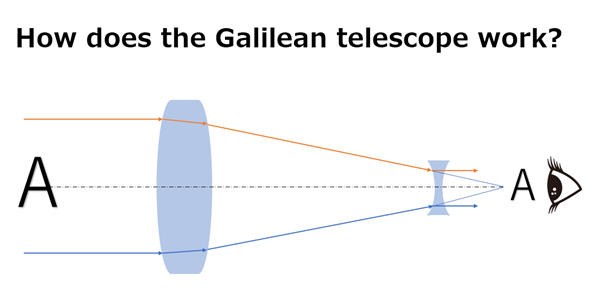
The advantage of a Galilean telescope is that you get an upright image without any prisms, which makes it possible for opera glasses to be built very compact and chic.
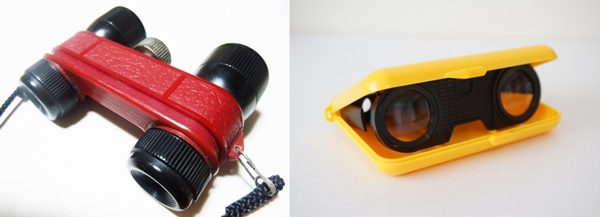
Opera glasses
However, the disadvantage is that the field of view decreases in proportion to the magnification. Even with 5× magnification, the field of view gets extremely narrow, like looking down a deep well.
For this reason, most opera glasses have very low magnification, such as 3×.
On the other hand, a Keplerian telescope system is used in regular binoculars or prism binoculars. Unlike a Galilean telescope, a Keplerian telescope uses a convex ocular lens (eyepiece), which produces an inverted image.
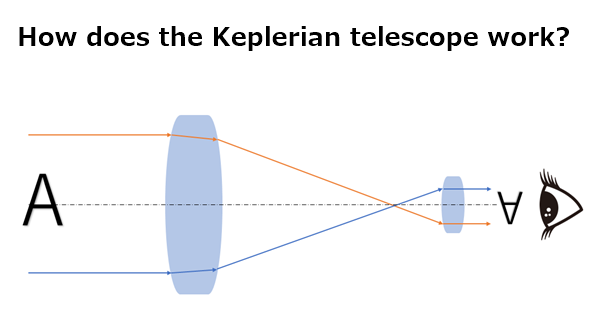
When stargazing with a Keplerian telescope, the inverted image has no negative effect. However, for binoculars, the image should be corrected so that we can see an upright image. This is why prisms are used in binoculars.
To show how prism binoculars work, I’ve disassembled a pair.
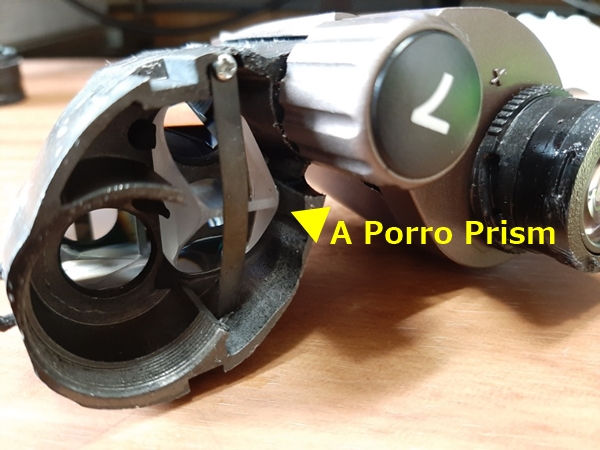
The left eyepiece has been removed.
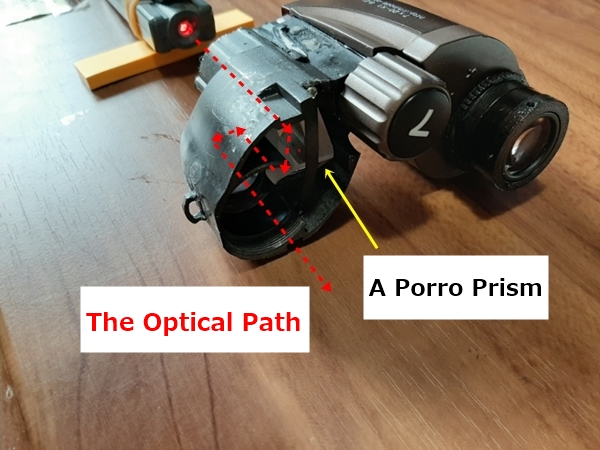
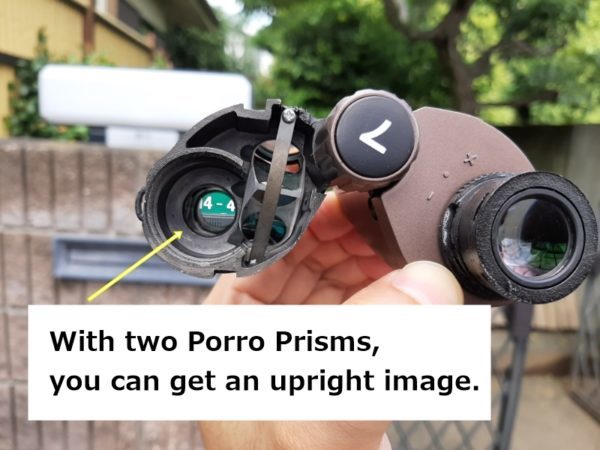
Which are better, opera glasses or binoculars?
Considering that opera glasses have such low magnification, as 3×, and a very narrow field of view, I believe that binoculars are much better.
Opera glasses are usually much lighter than binoculars since they have no prisms inside. However, compact binoculars only weigh around 200g, which makes them very easy to take with you.
Above all, the narrow field of view of opera glasses annoys me so much that I never use them for any purpose. For me, opera glasses are like toys.
My recommendation: Hinode A5 5×21
I highly recommend the Hinode A-5 5×21 for theater use. The Mini Porro Prism or Reverse Porro Prism compact binoculars feature a low magnification (5×) and a wide field of view (11 degrees).
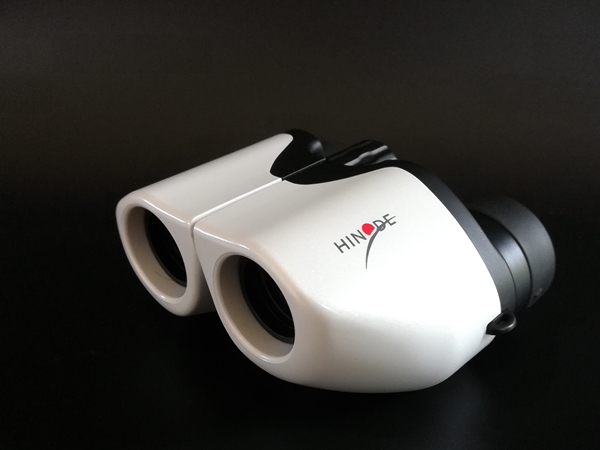
With this pair, if your seat is 40 meters away from the stage, you’ll be able to see one-third of the stage within the field of view.
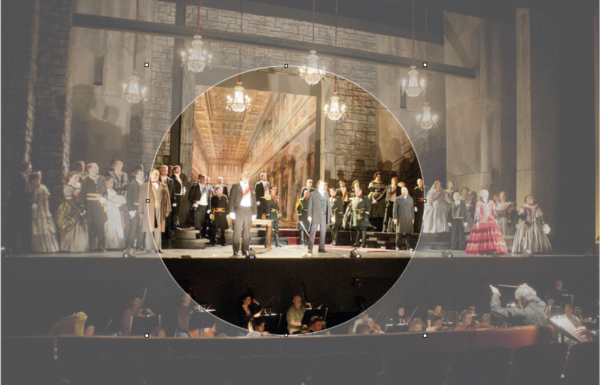
By TheAtlantaOpera – Own work, CC BY-SA 3.0, https://commons.wikimedia.org/w/index.php?curid=19135126
Furthermore, its apparent field of view is relatively wide at 55 degrees, for low-powered compact binoculars, which is very comfortable to use.
Enjoy the advantages of low-powered binoculars: a bright image with less aberration and less shake. This enables us to comfortably look through the binoculars for long periods at a time.
Also, this pair controls stray light and internal reflection well thanks to large Porro Prisms.
When actors are in the spotlight, with poor binoculars, you’ll see unwanted stray light which lowers the contrast and clarity.
Generally speaking, opera glasses usually do not have the high-quality black matte coating that binoculars have inside to control stray light that can get into the eyepieces. This is another reason why I think binoculars are better.
The Hinode A5 5×21 are designed to be small enough to fit easily into a women’s handbag. Although they are not Roof Prism binoculars, they have a chic and streamlined look.
After you try the Hinode A5 binoculars at the opera, you won’t want to go to the theater without them!
Summary
A pair of compact binoculars is a must for a better theater experience. In most cases, binoculars are allowed in theaters.
It may be controversial whether opera glasses are better than binoculars. In my view, however, while opera glasses may be more compact, binoculars are overwhelmingly superior because of their optical ability.
For theater use, low magnification and a wide field of view are needed to be able to see a large portion of the stage at any one time. Besides, compact designs can be chic and elegant.
I suggest that you use the Hinode A5 5×21 for theaters because this pair meets all of the criteria talked about here. They cost a little more than opera glasses, but you will soon realize that the extra cost is money well spent.
I’m convinced that we can all enjoy plays more with a pair of compact binoculars.
